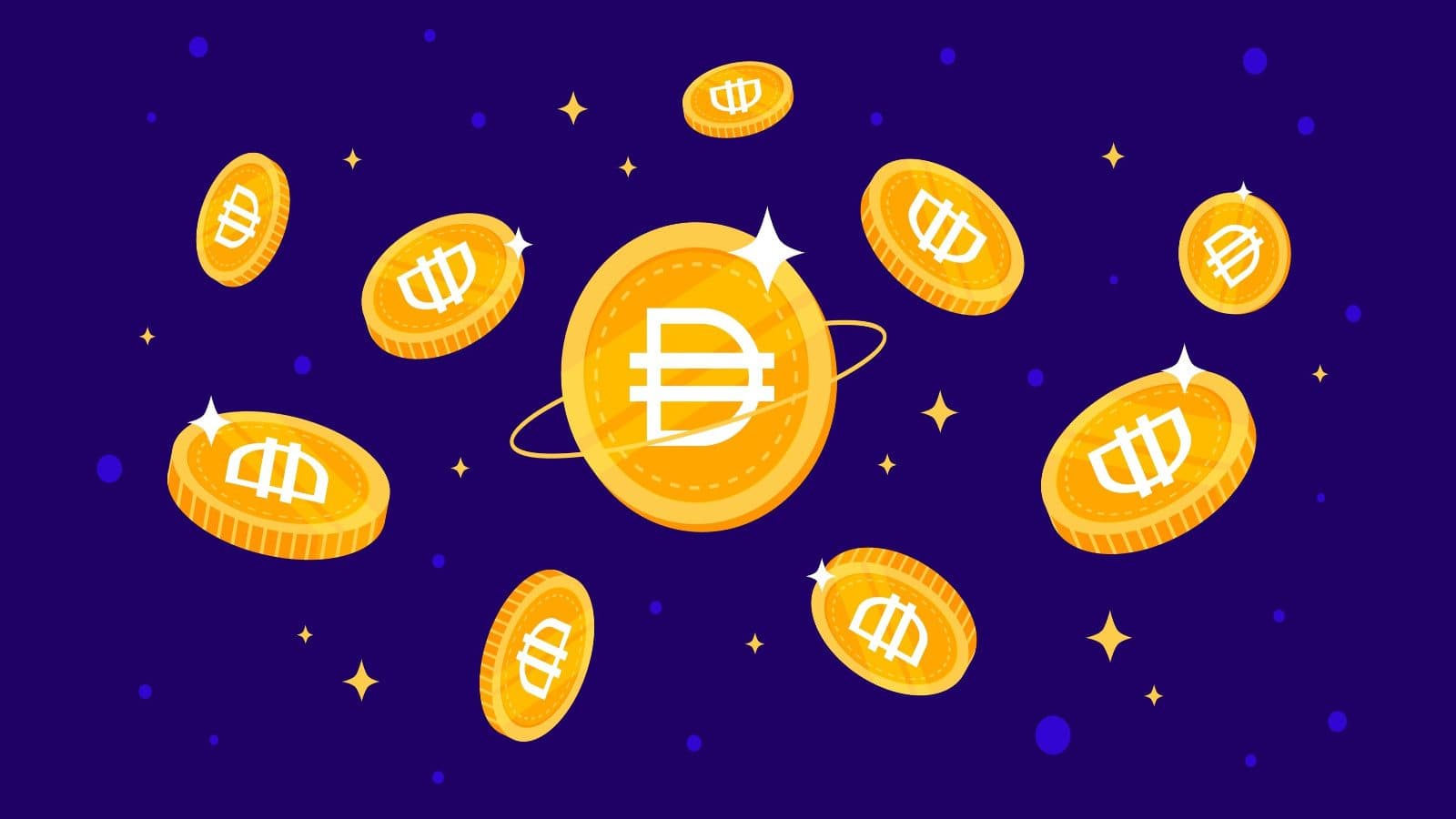After TerraUSD’s Collapse, Will DAI Expand Into Cosmos?
Umee, a cross-chain borrowing and lending DeFi hub, advocates for tighter integration between Cosmos and MakerDAO

DAI tokens | Source: Shutterstock
- DAI can be bridged to Cosmos in multiple ways, but Umee is developing a concept of “bridgeless collateralization” using a bespoke oracle
- The CEO of Umee wants MakerDAO to adopt ATOM as a collateral asset to mint DAI
In the wake of the TerraUSD (UST) collapse, the Cosmos ecosystem has increasingly looked to onboard alternatives to meet stablecoin demand, such as bridged DAI and USDC from Ethereum.
A new borrowing and lending protocol, Umee — think Compound for Cosmos — is betting on the OG of decentralized stablecoins, MakerDAO’s DAI. For the uninitiated, Cosmos is an ecosystem of sovereign application chains connected by the Cosmos hub. Umee is one of them.
UST’s blowup hit Cosmos hard, as UST was the de facto stablecoin in Cosmos DEXes Osmosis, Junoswap and Crescent. In Osmosis, for instance, many liquidity providers (LPs) were prevented from selling their UST positions due to the DEX (decentralized exchange) providing strong incentives to lock liquidity for up to 14 days. These LPs could only watch helplessly as the value of their pool tokens drifted toward zero, until an emergency governance proposal to remove UST kicked in.
Once it became clear UST was dead, Cosmos stakeholders quickly sought to fill the void. Enter DAI, the oldest decentralized stablecoin, with about $300 million in daily volume and a $6.5 billion market cap, according to data gathered by Blockworks.
“In the Cosmos space, we believe in quality, and we want to find the most viable decentralized stablecoin,” Umee CEO Brent Xu told Blockworks.
“At the moment, all things point to DAI being this go-to stablecoin that the whole interchain can rely on.”
Interchain refers to all the blockchains connected via the Cosmos hub through inter-blockchain communication (IBC).
DAI can be minted using a myriad of collateral on Ethereum, although predominantly ether. It has survived multiple market cycles, including periods of high volatility, over its roughly five years in existence.
A Cosmos-native approach
Xu advocates for making DAI multichain — both in its availability and its collateral. He proposes expanding DAIs collateral set to include Cosmos-native assets, such as ATOM.
To pull it off, Umee has developed a new cross-chain technology called “bridgeless collateralization.” The idea is that users can keep their assets on one blockchain, rather than sending them across a bridge to become wrapped assets on another. That should, in theory, avoid the security problems involving wrapped assets seen in several high-profile exploits, such as Wormhole bridge’s in February.
“What we do is we have a powerful oracle in the middle…it can send a signal to say, ‘Hey, let’s mint some DAI on the Cosmos blockchain that’s backed by Ethereum assets, as well as Cosmos assets.’”
This bridgeless form, which Xu calls “a much more sustainable model, as opposed to having multiple bridges for one particular asset,” will come later, however. At first, Umee plans to use the decentralized Gravity Bridge for DAI as a wrapped asset.
“We take a bridge-agnostic approach and have stable swaps on our roadmap in anticipation,” he said. That will allow users to move between various stable assets, including different types of wrapped DAI.
For instance, the largest Cosmos-based dex, Osmosis, has adopted bridged DAI from Axelar Network as its canonical version of the Ethereum stablecoin.
To realize Umee’s vision, Maker governance votes will be needed. Details of the process are pending, but Xu expects it will take three to six months to rally support from the Maker community.
“We see this as a deep partnership,” he said. “We want to encourage as much DAI usage in Cosmos [as possible] to help bolster this lack of a viable stablecoin in the Cosmos ecosystem,” adding that he has personally been working with MakerDAO for years.
Get the news in your inbox. Explore Blockworks newsletters:
- The Breakdown: Decoding crypto and the markets. Daily.
- 0xResearch: Alpha in your inbox. Think like an analyst.






